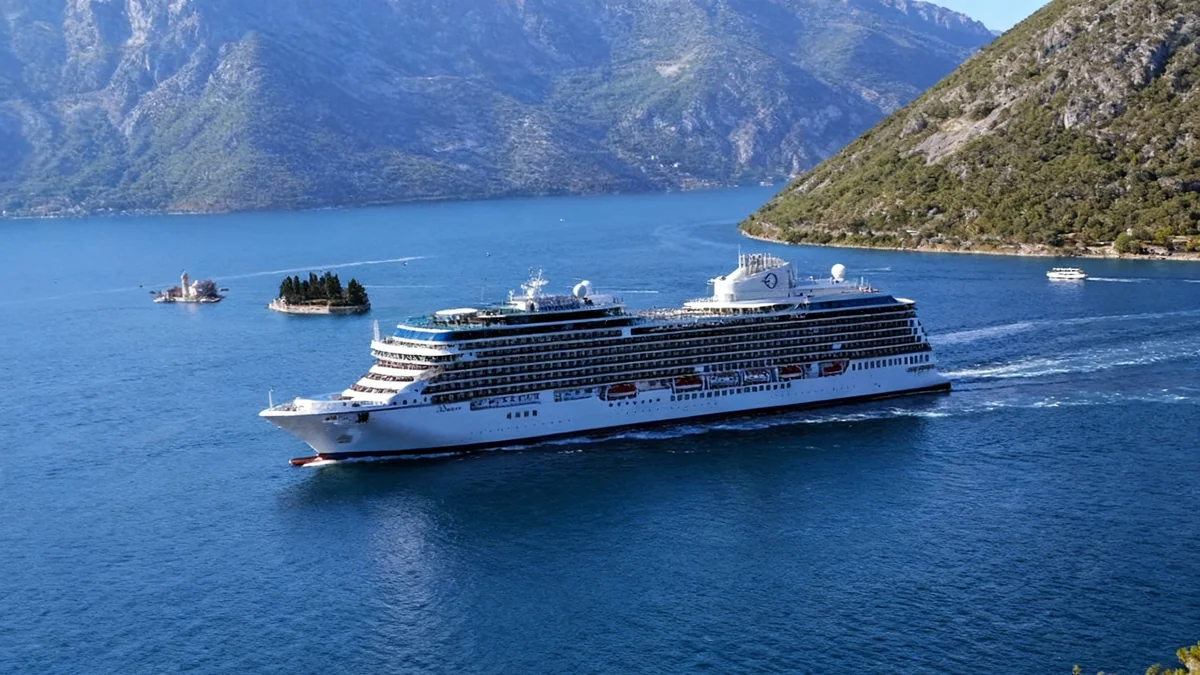Holiday travel bookings in the United States are showing an increase over last year's record-setting numbers, but government officials are warning of potential widespread disruptions. As travelers finalize their Thanksgiving and Christmas plans, concerns over air traffic controller staffing could impact flight schedules during the busiest travel seasons.
Key Takeaways
- Passenger bookings for Thanksgiving on major U.S. airlines are up 2.2% from last year, with Christmas week reservations also slightly higher.
- Travel experts identify mid-October to early November as the optimal time for booking holiday flights to secure better prices.
- Officials have warned of potential travel “disaster” due to air traffic controller staffing shortages, which could lead to significant delays.
- For those seeking a different travel experience, a new luxury train, the Dolce Vita Orient Express, has launched in Italy, offering a return to classic, leisurely journeys.
A Surge in Holiday Travel Demand
Americans are gearing up for a busy holiday season, with airline booking data indicating a continued strong appetite for travel. According to aviation analytics firm Cirium, passenger reservations for the Thanksgiving period on major U.S. carriers have climbed by 2.2 percent compared to the same time last year. Christmas week bookings have also seen a modest increase of just under 1 percent.
This trend suggests that 2024 could surpass the record-breaking travel volumes seen in 2023. Travel search engine Kayak has analyzed its data to identify the best times for consumers to purchase tickets. The company suggests that the "sweet spot for holiday savings" typically falls between mid-October and early November, meaning the window for the best deals is rapidly closing.
Best Days to Fly
To avoid the biggest crowds and potentially find lower fares, data suggests flying on Monday, November 24, for Thanksgiving travel. For Christmas, the most affordable day for both domestic and international flights is expected to be Christmas Eve, December 24.
Warnings of Potential Air Travel Chaos
Despite the positive booking trends, a shadow looms over the holiday travel period. Government officials have issued stark warnings about the potential for significant disruptions. Following a recent roundtable with aviation and travel leaders, Vice President JD Vance and Transportation Secretary Sean Duffy cautioned that the system is under strain.
The primary concern revolves around staffing shortages for air traffic controllers. A monthlong government shutdown has impacted pay cycles, raising fears that some essential personnel may not report for work. "Look it could be a disaster. It really could be," Vance stated, highlighting the risk of missed paychecks leading to absenteeism.
"That’s going to lead to massive delays," he continued, explaining the direct link between staffing levels and airport efficiency.
Transportation Secretary Sean Duffy clarified that safety will not be compromised. However, he noted that when facilities are understaffed, the only way to maintain safety is to reduce the rate of takeoffs and landings. "If we have issues, we will slow it down," Duffy said, confirming that this operational necessity would result in delays for passengers.
The Economic Impact
The U.S. Travel Association estimates that the American travel industry has already lost out on approximately $1 billion in consumer spending each week of the government shutdown, compounding the challenges faced by airlines, hotels, and related businesses heading into the critical holiday season.
A Return to Glamour on the Rails
While the U.S. air travel system braces for a potentially turbulent holiday season, a new venture in Italy offers a starkly different vision of travel. The Dolce Vita Orient Express is reviving the golden age of rail journeys, providing a luxurious, slow-paced alternative to crowded airports.
Inspired by the post-war Italian glamour immortalized in Federico Fellini's films, the train aims to deliver an immersive experience. With its meticulously designed wood-paneled interiors, fine dining, and attentive service, the journey itself becomes the destination. The service was unveiled earlier this year and is Italy's first homegrown luxury train.
The 'Sweet Life' on Tracks
Travelers can select from 18 different itineraries that wind through the Italian countryside, offering views of iconic landscapes like the rolling hills of Tuscany. A 24-hour trip on the train is designed as a complete escape, starting from Rome's renovated Ostiense station. The experience is a deliberate move away from the speed and efficiency of modern travel, focusing instead on comfort, style, and scenery.
- 18 Itineraries: Routes cover various regions of Italy.
- Luxury Onboard: Features include deluxe cabins, a restaurant car, and a lounge with live music.
- Fellini-Inspired: The entire aesthetic evokes the 1960s era of "La Dolce Vita."
Diverging Paths for Rail Travel
The launch of the Dolce Vita Orient Express highlights a growing market for experiential, high-end travel. It also provides a sharp contrast to the state of passenger rail in the United States. While Europe continues to invest in both luxury and high-speed rail, the U.S. faces persistent challenges.
America's fastest train, the NextGen Acela, made its public debut recently. However, despite being capable of speeds up to 160 miles per hour, it rarely reaches its maximum potential. The limitation is not the train itself, but the aging tracks it runs on, which are not consistently rated for such high speeds. This infrastructure gap underscores the different priorities and investment levels in passenger rail between the U.S. and many European nations.
As American travelers prepare for a holiday season that promises both reunion and potential frustration, the Dolce Vita Orient Express serves as a reminder that travel can be more than just getting from one point to another. It can be an experience in itself, a concept that is finding new life on the historic railways of Italy.





